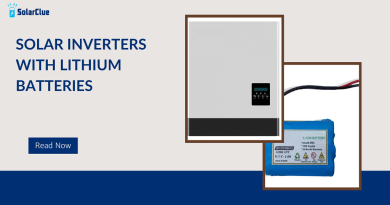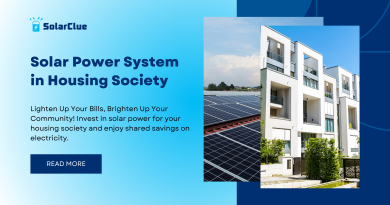how to get solar panel for home
As solar energy becomes increasingly popular in India, understanding the factors that influence the cost of solar panels is crucial for making an informed purchase. This guide will explore the various aspects of buying solar panels, from the types of panels available to government subsidies, financing options, and cost trends in the Indian market.
Table of Contents
- 1 Factors Affecting Solar Panel Prices
- 2 Government Subsidies and Incentives
- 3 Financing Options
- 4 Cost Trends in the Indian Solar Market
- 5 Comparing Solar Energy Costs to Traditional Electricity
- 6 Tips for Getting the Best Price
- 7 The Impact of Panel Size and Wattage on Cost
- 8 Installation Costs and Regional Variations
- 9 Understanding Payback Periods and ROI
- 10 The Future of Solar Panel Costs in India
- 11 Evaluating Solar Panel Manufacturers and Suppliers
- 12 The Importance of Proper Installation and Maintenance
- 13 Addressing Common Misconceptions About Solar Panel Costs
- 14 Table: Cost Comparison of Different Solar Panel Types
- 15 FAQs
Factors Affecting Solar Panel Prices
Several factors contribute to the overall cost of solar panels in India:
- Panel Type: The type of solar panel you choose significantly impacts the cost. Monocrystalline panels are more efficient but also more expensive, while polycrystalline panels are cheaper but less efficient. Thin-film panels are the least efficient and typically used in specific applications.
- Wattage: The wattage of a solar panel determines its power output. Higher wattage panels generate more electricity and cost more upfront but can be more cost-effective in the long run, especially for high-energy households.
- Brand: Established brands like Tata Power Solar, Adani Solar, and Vikram Solar tend to charge a premium for their panels due to their reputation, quality, and warranty offerings.
- Installation Complexities: The complexity of the installation can also affect the cost. Roof type, height, and the need for additional equipment like scaffolding can increase installation expenses.
- Location: Geographic location plays a role in the overall cost due to variations in sunlight availability, local labor costs, and state-specific incentives or taxes.
Government Subsidies and Incentives
The Indian government offers various subsidies and incentives to encourage the adoption of solar energy:
- Central Government Subsidy: The Ministry of New and Renewable Energy (MNRE) provides a subsidy of up to 40% for residential rooftop solar systems up to 3 kW, and 20% for systems between 3 kW and 10 kW.
- State-Level Incentives: States like Gujarat, Maharashtra, and Rajasthan offer additional subsidies, tax rebates, and net metering benefits.
- Accelerated Depreciation: Businesses can avail of accelerated depreciation benefits, allowing them to reduce their taxable income by depreciating the solar asset faster.
Financing Options
To make solar panel systems more accessible, several financing options are available:
- Solar Loans: Banks and financial institutions offer solar-specific loans with favorable interest rates, allowing you to spread the cost over several years.
- Leasing: With solar leasing, you can rent the solar panels for a fixed monthly fee, avoiding the upfront costs of purchasing the system outright.
- Power Purchase Agreements (PPA): Under a PPA, a third-party company installs and maintains the solar panels on your property, and you pay for the electricity generated at a rate lower than grid electricity.
Cost Trends in the Indian Solar Market
The cost of solar panels in India has been decreasing steadily due to technological advancements, increased manufacturing capacity, and government policies promoting renewable energy.
| Year | Average Cost per Watt (₹) |
|---|---|
| 2018 | ₹50 – ₹55 |
| 2020 | ₹40 – ₹45 |
| 2022 | ₹35 – ₹40 |
| 2024 (Projected) | ₹25 – ₹30 |
Comparing Solar Energy Costs to Traditional Electricity
Solar energy offers long-term savings compared to traditional electricity sources. Although the upfront cost of solar panels can be high, the savings on electricity bills over time can lead to significant financial benefits.
| Comparison Factor | Solar Energy | Traditional Electricity |
|---|---|---|
| Cost Over Time | Decreases after payback period | Increases due to fuel and inflation |
| Environmental Impact | Minimal, renewable energy source | High carbon emissions |
| Energy Independence | Reduces reliance on the grid | Dependent on utility companies |
Tips for Getting the Best Price
- Compare Multiple Quotes: Obtain quotes from several installers to ensure you are getting a competitive price.
- Leverage Government Subsidies: Take full advantage of available subsidies and incentives to reduce upfront costs.
- Choose the Right Panel Type: Select a panel type that meets your energy needs and budget. Higher efficiency panels may cost more initially but offer better long-term savings.
- Negotiate Installation Costs: Some installers may offer discounts or financing options to reduce upfront costs.
- Consider Long-Term Value: Invest in high-quality components like inverters and mounting systems for better performance and durability.
The Impact of Panel Size and Wattage on Cost
Larger panels with higher wattage ratings typically cost more but generate more electricity, which can lead to quicker payback periods and higher returns on investment. However, the choice of panel size and wattage should be balanced with your energy needs and the available installation space.
Installation Costs and Regional Variations
Installation costs in India can vary based on regional factors, including labor costs, availability of skilled installers, and local regulations. Urban areas typically have higher installation costs due to higher labor rates, while rural areas may offer lower costs but may require more logistical planning.
Understanding Payback Periods and ROI
The payback period is the time it takes for the savings on your electricity bills to equal the cost of the solar panel system. ROI (Return on Investment) measures the profitability of your solar investment.
- Example Calculation:
- System Cost: ₹2,50,000
- Annual Savings: ₹35,000
- Payback Period: ₹2,50,000 / ₹35,000 ≈ 7.14 years
- ROI: (₹3,50,000 – ₹2,50,000) / ₹2,50,000 × 100 = 40% over 10 years
The Future of Solar Panel Costs in India
The future of solar panel costs in India looks promising, with prices expected to continue their downward trend. Technological advancements, increased competition among manufacturers, and supportive government policies are likely to make solar energy even more affordable and accessible in the coming years.
Evaluating Solar Panel Manufacturers and Suppliers
When choosing solar panels for your home, it’s important to evaluate manufacturers and suppliers based on several factors:
- Reputation and Reviews: Research the reputation of the manufacturer and read customer reviews to gauge the reliability and performance of their panels.
- Warranty: Check the warranty period offered by the manufacturer. A longer warranty period indicates confidence in the product’s durability and performance.
- Certifications: Ensure that the panels are certified by recognized organizations, such as the Bureau of Indian Standards (BIS) or the International Electrotechnical Commission (IEC).
The Importance of Proper Installation and Maintenance
Proper installation is crucial for the efficiency and longevity of your solar panel system. Ensure that your installer is experienced and follows best practices, including:
- Correct Panel Orientation and Tilt: Panels should be oriented and tilted to maximize sunlight exposure.
- Secure Mounting: The mounting system should be sturdy and able to withstand harsh weather conditions.
- Regular Maintenance: Periodic cleaning and inspections can help maintain the efficiency of your panels and identify any potential issues early on.
Addressing Common Misconceptions About Solar Panel Costs
- Myth: Solar panels are too expensive for the average homeowner.
- Fact: While the upfront cost can be high, government subsidies, financing options, and long-term savings make solar panels an affordable investment.
- Myth: Solar panels don’t work well in cloudy or rainy climates.
- Fact: Solar panels can still generate electricity on cloudy days, though output may be reduced. Battery storage can help mitigate the impact of less sunlight.
Table: Cost Comparison of Different Solar Panel Types
| Panel Type | Wattage Range | Efficiency Range | Cost per Watt (₹) | Ideal Use Case |
|---|---|---|---|---|
| Monocrystalline | 300W – 400W | 18% – 22% | ₹25 – ₹30 | High-efficiency needs |
| Polycrystalline | 250W – 350W | 15% – 18% | ₹20 – ₹25 | Budget-conscious buyers |
| Thin-Film | 150W – 250W | 10% – 12% | ₹15 – ₹20 | Specific applications |
FAQs
1. How much does it cost to install solar panels in India in 2024?
- The cost of solar panels in India for 2024 ranges from ₹25 to ₹30 per watt. A typical 5kW system might cost between ₹1,25,000 and ₹1,50,000 before subsidies.
2. What factors influence the cost of solar panels?
- Factors include panel type, wattage, brand, installation complexity, and regional labor costs.
3. Are there government subsidies available for solar panel installations?
- Yes, the Indian government offers subsidies through the MNRE, covering up to 40% of the cost for small rooftop systems.
4. How long does it take to recoup the investment in solar panels?
- The payback period typically ranges from 5 to 8 years, depending on system size, location, and energy consumption.
5. What are the benefits of solar energy compared to traditional electricity?
- Solar energy offers lower long-term costs, minimal environmental impact, and increased property value.


